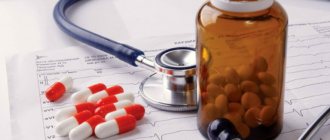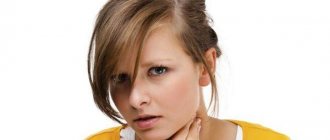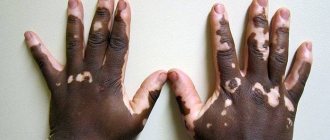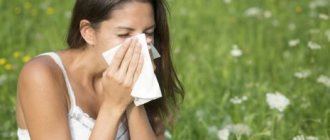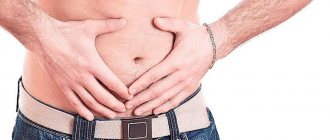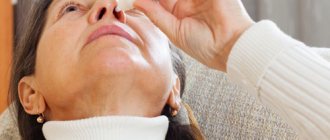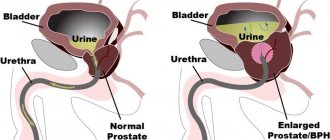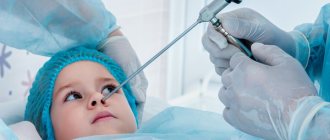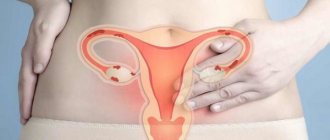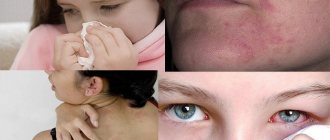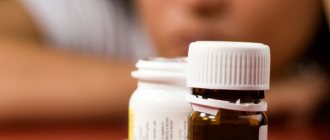Urticaria is a pathology of the epidermis in which blisters appear on the skin as if from a nettle burn. This is where the name of the disease comes from. The rash causes aesthetic discomfort and is also accompanied by itching.
For these reasons, they try to get rid of the disease in a short time. The doctor will tell you how to quickly recover if urticaria occurs; the specialist will prescribe the appropriate medications and determine the duration of treatment. At the first signs of illness, it is recommended to make an appointment with a dermatologist.
How does urticaria manifest?
The main sign of the pathology is the appearance of itchy rashes in the form of blisters on the epidermis, like after a nettle burn. In this case, redness of the skin around the formation is observed.
The rashes have an irregular shape and are also characterized by the absence of clear boundaries. Blisters most often occur in groups. The rashes tend to merge, so they often combine into one large formation.
A distinctive feature of the blisters that appear with urticaria is their rapid and complete disappearance. Within a short time, with proper therapy, the rashes change tone to a pale shade and disappear.
In this case, no traces in the form of scars or burns remain on the epidermis. This is the exact opposite of a burn. In this case, the blisters can remain on the body for a long time, and after disappearing, scars remain that disappear only after a certain period of time.
Another characteristic feature of blisters in urticaria is that some time after the rash disappears, the rash appears again. In this case, formations appear in a completely different place from where they were initially observed.
For example, if blisters appeared on the upper extremities and then disappeared, then the rash may appear on the lower extremities and after some time, also disappear and form in another place.
The doctor selects a remedy for urticaria based on the subjective characteristics of the patient and the nature of the pathology. Self-therapy can aggravate the situation and cause complications.
Symptoms
The symptoms of the acute form are pronounced. Allergy symptoms appear within 10 minutes. after exposure to an allergen. If there is no repeated contact with the irritant, then you can notice regression of skin manifestations after 3 hours. The body completely gets rid of allergens in 2-3 days.
Urticaria gets its name from the appearance of the rash - it resembles nettle burns. These are pale pink bubbles. They rise above the surface of the skin, the dermis around them acquires a dark red tint. If you press on the blister, it turns white, but the color quickly returns after the mechanical impact stops. The size of the blisters varies from small rashes to large elements more than 1 cm in diameter. The blisters may merge together to form large areas.
Symptoms of urticaria in adults appear on the trunk and limbs, less often on the mucous membranes.
Allergies on the body are accompanied by severe itching, since during an allergic reaction a huge amount of free histamine is released.
With the development of external manifestations of acute urticaria, health worsens: body temperature rises, weakness, drowsiness, and body aches appear. Symptoms of general malaise may persist even after the rash disappears.
General algorithm for the treatment of urticaria
The doctor knows how to treat urticaria in adults and children. However, before prescribing a medicine for urticaria, a specialist must determine the cause of the pathology.
To do this, the specialist prescribes a series of tests for the patient and, based on the results of the analysis, identifies the allergen that triggered the onset of the disease. In order for the therapy to give the desired result, it is necessary to exclude contact with the causative agent of the atypical reaction. Only after this is it recommended to start treatment.
If urticaria occurs together with another disease, then therapy for the underlying pathology is first prescribed and only after getting rid of this disease is the secondary disease prescribed. This is the only way to count on recovery.
To treat urticaria itself, it is recommended:
- drink antihistamines that will relieve the symptoms of the pathology, or use injections for intravenous or intramuscular administration;
- use anti-urticaria remedies for external use - such drugs relieve itching, burning, redness, and swelling of soft tissues;
- carry out physical therapy;
- adhere to certain nutritional principles.
You should not use medications to treat urticaria without a doctor's prescription. This will lead to complications, some of which are fatal.
Review of drugs
Urticaria is a dermatosis that occurs with the formation of blisters on the skin and its moderate swelling. There are two forms of the disease - acute and chronic. It is this factor that becomes determining when a doctor chooses medications for urticaria. Read more about acute urticaria→
Antihistamine medications for urticaria
The main reason for the formation of blisters on the skin is the release of a large amount of histamine into the blood, which is formed upon contact with an allergen. To neutralize it, patients are prescribed antihistamine tablets for urticaria. After the penetration of their active ingredients into the systemic bloodstream, the intensity of all symptoms of the pathology decreases within a few minutes. The following drugs have the greatest therapeutic effectiveness:
- Suprastin. The ethylenediamine drug has antihistamine and m-anticholinergic properties and is capable of stopping attacks of nausea and vomiting. The therapeutic effect manifests itself within 4-5 hours, so you need to take up to 4 Suprastin tablets per day.
- Tavegil. The drug is a histamine H1 receptor blocker and has a strong antihistamine and antipruritic effect that lasts about 12 hours. In acute cases of urticaria, patients are prescribed 1-2 Tavegil tablets per day.
- Loratadine. The drug inhibits histamine-sensitive receptors a few minutes after its administration. It stimulates the resorption of edema, prevents spasms of smooth muscles, and reduces the permeability of blood vessels. The daily dose of Loratadine is 1 tablet.
Remedies for urticaria in adults are used until symptoms are completely eliminated. But often, after a significant improvement in well-being, their dosages are gradually reduced or the tablets are replaced with ointments, gels, for example, Fenistil.
Enterosorbents for urticaria
This is the name for medicines for urticaria in adults and children with an adsorbing effect. They attract allergic agents and products of the inflammatory process. Enterosorbents then bind toxins on their surface and remove them with each bowel movement. This helps reduce the severity of symptoms and reduce skin rashes. What enterosorbent medications can a doctor prescribe:
- Enterosgel. The product is characterized by sorption and detoxification properties. It evacuates endogenous and exogenous toxic substances of various natures from the body, including pathogenic microorganisms and medications. During treatment with Enterosgel, the absorption of vitamins and minerals is not impaired. The daily dose for adults is 65 g.
- Smecta. Aluminosilicate of natural origin has an adsorbing effect. Available in the form of coarse crystalline powder for preparing a suspension. It exhibits antidiarrheal activity, which should be taken into account when taking it. To bind allergens, Smecta is taken up to 4 times a day.
- Polysorb. The active ingredient of the drug is silicon dioxide, which is not metabolized in the body and is excreted from it along with toxins unchanged. Polysorb effectively binds harmful substances that provoke the manifestation of endogenous toxicosis. The highest permissible dose for adult patients per day is 0.33 g/kg.
Time-tested activated carbon is also used as an enterosorbent. But doctors have recently prescribed it quite rarely due to the need to take a large number of tablets.
Sedatives for hives
A pronounced symptom of allergic pathology is unbearable skin itching. It provokes psycho-emotional instability, neurotic states, and worsens the quality of sleep. Therefore, therapeutic regimens must include sedative tablets for urticaria in adults and children:
- Novo-Passit. The medicine is produced by a Czech manufacturer in the form of tablets and syrup. Its composition is represented by ingredients of plant origin and useful synthetic additives. Novo-Passit helps you fall asleep quickly and improve your mental state by relieving itching. You need to take 3 tablets and 2 tablespoons of syrup per day.
- Persen. The medicine eliminates anxiety and irritability, nervous excitement and psycho-emotional stress. For insomnia, it facilitates the process of falling asleep, without causing drowsiness during the day. The maximum daily dose is 12 tablets.
Water infusions and alcohol tinctures with herbal components are also used as sedative medications. These are St. John's wort, valerian, motherwort. Herbal teas with oregano, peppermint, lemon mint, and thyme are beneficial.
Corticosteroids for urticaria
Photo from prosustavi.com
If antihistamines are ineffective in severe forms of urticaria, glucocorticosteroid therapy is used. It is used in extreme cases due to the pronounced toxic effect of hormonal agents. These drugs for urticaria are rarely used in adults, and for the treatment of children, doctors prefer to prescribe only ointments or gels with glucocorticosteroids. The most commonly used hormonal medications are:
- Diprospan. It has a powerful anti-inflammatory effect, suppresses the aggression of the immune system, and promotes the resorption of edema. Diprospan is usually administered intramuscularly or intravenously. Single and daily doses are calculated by the doctor individually, taking into account the general health of the patient.
- Dexamethasone. The medicine has an antipruritic and antiexudative effect, reduces local temperature, relieves inflammation, eliminates burning and pain. Dexamethasone is used in the form of tablets or solutions for parenteral administration. The dosage regimen is also individual.
Glucocorticosteroids are not used for more than a few days. After the symptoms have weakened, their doses must be reduced gradually due to the “rebound syndrome” characteristic of all hormones.
Vitamins for urticaria
Medicines with vitamins are prescribed to patients to increase immunity, strengthen the body's defenses, and improve mental and physical performance. The most effective are Vitrum, Supradin, Centrum, Complivit, Selmevit, Multitabs. In the treatment of children, balanced complexes of vitamins, macro- and microelements are used in chewable lozenges, for example, Vitamishki. Read more about urticaria in children→
First aid for acute manifestations of urticaria
Antihistamines do not always give the desired effect for urticaria. If such medications do not help, this leads to anaphylactic shock and Quincke's edema. These are dangerous conditions that, without proper treatment, cause death in the patient. Their occurrence is accompanied by the following symptoms:
- swelling of the larynx, causing suffocation;
- a sharp drop in blood pressure;
- loss of consciousness.
If such symptoms are detected, you must immediately call an ambulance. Before the arrival of specialists, it is recommended to perform the following manipulations:
- place the patient on his back so that oxygen can enter the lungs;
- place a cushion under your feet to reduce blood pressure;
- administer intramuscular medication.
Injections for urticaria give an almost immediate effect. As a rule, a person suffering from this pathology always has a syringe with medicine in case of an attack. For acute pathology, the following traditional medicine products are recommended:
- Adrenalin. This remedy quickly relieves any attack caused by an allergy, including anaphylactic shock. The drug is injected into the muscle using a syringe. If there is no visible result, the injection is repeated after 10 minutes. Dosage – 1 ml of 5% solution;
- Prednisolone. This product has anti-shock and anti-allergic properties. In acute conditions, the drug is injected into the muscle every 4 hours. Dosage – up to 120 ml of the drug;
- Diphenhydramine. This remedy has an antihistamine and hypnotic effect. Dosage – 2 ml of 1% solution. This portion is recommended to be injected into the muscle every 4-6 hours.
After administering the drug, the patient can wait for the ambulance to arrive without fear for his life.
Description of the disease
Urticaria is a fairly common pathology with difficult diagnosis. Its symptoms are very similar to those of other skin diseases, so a thorough examination is required to make an accurate diagnosis.
What is urticaria
Why does it occur
The disease can occur in both chronic and acute forms. Moreover, urticaria affects even children's bodies. The most common causes of pathology include:
Epidemiology of urticaria
- the body's reaction to various food allergens;
- contact with saliva or pet hair;
- consequences of taking certain medications;
- negative effects of cosmetics or metals;
- hypothermia of the body;
- poisonous insect bites;
- previous vaccination;
- helminthiasis or helminthic infestation.
Causes of urticaria
Note! Urticaria can also develop due to nervous stress or hormonal imbalance. But regardless of the cause of its appearance, the pathology must be treated in a timely manner in order to eliminate unpleasant symptoms and prevent the occurrence of serious complications.
Classification
There are several types of urticaria, which differ from each other in causative factors. Let's consider the main ones:
- dermographic (urticarial dermographism);
- cold (develops when the body is severely hypothermic);
- solar (allergic manifestations to exposure to sunlight);
- medicinal (develops while taking certain medications);
- allergic or contact (considered the most common type of urticaria).
Classification of urticaria
Depending on the identified type of disease, as well as the cause of its development, the doctor will select the appropriate therapeutic course. In most cases, maximum effect can be achieved only with an integrated approach.
Standard therapeutic line
The standard therapeutic line is based on taking antihistamines. Such medicines for urticaria quickly relieve blisters, redness of the epidermis, swelling of soft tissues and discomfort.
Most often, doctors prescribe Suprastin, Loratadine, Claritin and other similar drugs. Such drugs quickly relieve pathology and do not cause addiction. However, some of the products have an effect on the nervous system, so the use of such products should be agreed with a doctor.
To treat the disease, medications that have a sedative effect are also prescribed. Such products soothe and also relieve itching and burning. Usually doctors prescribe Motherwort, Persen, Valerian and other similar remedies.
If taking sedatives and antihistamines does not produce results, the doctor prescribes stronger drugs. These include products made on the basis of hormones. Such drugs suppress the activity of the immune system for a certain period of time.
This helps get rid of the symptoms of hives. However, such drugs are not recommended for long-term treatment of pathology. This will lead to a weakening of the body’s defenses and the emergence of various other diseases.
Glucocorticosteroid drugs have many contraindications, so such products can only be used for treatment as prescribed by a doctor. Typically, specialists prescribe Prednisolone, Hydrocortisone and other similar products.
For quick results, it is recommended to give injections for urticaria. The injection solution immediately penetrates the bloodstream. Thanks to this, the product gives an almost instant effect.
Main symptoms of urticaria
The most striking sign of urticaria is the appearance on the skin of dark pink blisters of various sizes, reminiscent of nettle “bites”. They can be located in small areas of the body (local form) or cover most of the skin (generalized form).
The affected areas of the skin turn red, become hot to the touch and cause pain when touched.
In addition, a person is bothered by severe itching, which becomes especially unbearable in the evening and at night, depriving him of normal sleep.
Often the clinical picture of urticaria can occur with the following symptoms:
- increased body temperature;
- headache;
- nausea, vomiting;
- painful sensations in muscles and joints;
- general weakness.
An attack of urticaria may be accompanied by allergic conjunctivitis, in which the mucous membranes of the eyes swell and begin to itch. Allergic rhinitis may also occur, with profuse nasal discharge leading to congestion and difficulty breathing.
Manifestations of urticaria cause physical and mental suffering to a person and often cause a nervous breakdown. In a small child, attacks of urticaria cause tearfulness, refusal to eat, insomnia, weight loss, and general deterioration of the condition.
To quickly recover from urticaria, you need to make an appointment with an allergist or dermatologist when the first signs appear.
Treatment with vitamins
The doctor does not always immediately prescribe pills for urticaria. In some cases, vitamins help get rid of the disease, since some of these products have antihistamine properties. The following useful elements are recommended for use:
- Vitamin A – relieves blisters;
- nicotinamide – blocks the synthesis of the hormone histamine, as a result of which the symptoms of urticaria disappear;
- vitamin C – reduces vascular permeability;
- magnesium – a deficiency of this mineral provokes the appearance of a rash, so replenishing the element can get rid of the rashes;
- Vitamin B12 – relieves allergies.
Difference from other forms
Acute urticaria is different from other forms of urticaria. Main differences:
- Chronic form. The duration of the course is more than 6 weeks, the period of exacerbation is replaced by remission. The rashes are less pronounced. In the acute form, the allergy appears immediately after exposure to the allergen, but it quickly disappears. More often than not, within 5-6 hours there is no trace left of the rash.
- Papular urticaria. The nature of the rash differs. The predominant nodular elements are red-brown in color, which are located on the extensor surfaces.
- Quincke's edema. This is a type of acute form, but it is characterized by damage to the deep layers of the epidermis, respiratory organs and larynx. The outcome of Quincke's edema is suffocation, so hospitalization is indispensable.
Toxin-removing drugs for urticaria
Blisters on the epidermis occur due to problems with the liver or pancreas. Malfunction most often occurs due to the accumulation of toxins in the body.
For this reason, for the treatment of urticaria in adults, medications are prescribed that relieve the body of harmful substances. Such products are called sorbents.
Most often, patients take white or black activated carbon. These products quickly remove toxins and are affordable. This explains the popularity of such products.
Experts often prescribe drugs such as Filtrum, Polysorb, Gastrosorb, Enterosgel and other similar products.
Sorbents relieve skin itching, blisters, redness and swelling of soft tissues.
What kind of disease is this
Acute urticaria can occur in patients of both sexes and of any age. The main manifestations of urticaria are rash, itching, and swelling of the skin. They are formed as a response of the human immune system to contact with an allergenic factor.
The irritant provokes the production of basophils and cells to eliminate it, which migrate into the interstitial fluid. The immune system, in response to this, produces a large number of mediators that provoke the appearance of blood capillaries and a rash with inflamed papules.
As a result, the clinical picture of acute urticaria manifests itself as clearly as possible: inflamed dropsy, unbearable burning, itching in the affected areas. The rash is located in different parts of the body and can have a diameter from 3 mm to 1 cm. Sometimes it grows to large spots, the diameter of which reaches 15 cm.
Important! Rashes can occur not only on the skin, but also on the mucous membranes of the mouth and nose, and the tissues of the genital organs.
Early diagnosis allows the patient to be cured in a short period of time, but if acute urticaria has become chronic, it is much more difficult to treat the disease.
Why does acute urticaria appear?
A person experiences a number of unpleasant symptoms with the development of urticaria. The causes of this disease in acute form can be of a diverse nature, which affects the method of treatment of the disease:
- Acute urticaria can take an allergic form, that is, it can be provoked by a number of allergens: food products, skin care products, household chemicals, plant pollen, fur, saliva and epidermis of animals, insect bites, etc.
- Taking medications for a long period: penicillin antibiotics, aspirin, B vitamins. This type of urticaria is called drug-induced urticaria and requires specific treatment.
- In more rare cases, the development of the disease can occur after hypothermia, prolonged exposure to sunlight, or after exposure to ultrasound.
- Sometimes the disease is a consequence of severe emotional stress, excessive physical exertion, or lack of sleep.
- Infectious diseases, diseases of the digestive and endocrine systems, helminthiasis.
On a note! The effectiveness of treatment and the patient’s recovery rate depend on how accurately the cause of the development of acute urticaria is identified. That is why it is important to carry out a number of diagnostic procedures and accurately establish the diagnosis.
Symptoms of the disease
The main symptom of acute urticaria is severe itching of the skin on the face and body. The patient will also notice the appearance of a small rash or large blisters, redness and thickening of the skin in areas affected by the rash, swelling of the face and fingers. All this happens after the allergen enters the human body and triggers an immune system response.
In particularly difficult situations, you can also notice other signs:
- feeling of nausea, dizziness, vomiting;
- pain in muscles and joints;
- chills, increased body temperature.
Important! If the patient notices such symptoms, it is extremely important to consult a doctor immediately. They indicate the addition of a secondary infection.
A dangerous complication of urticaria is Quincke's edema.
Quincke's edema can occur with sudden urticaria in adults. Treatment of this complication should begin immediately, as it is accompanied by swelling of the tissues of the throat and trachea, up to the complete loss of the person’s ability to inhale and exhale air.
Without the timely intervention of specialists, the patient may die from suffocation. You can read more about allergic edema in this article.
How long does it take for spots to disappear?
A special feature of the condition is the fact that symptoms can disappear as quickly as they appeared. 5-6 hours after the appearance, the first blisters disappear, and already the next day the skin can be completely cleared of rashes.
Without treatment and elimination of the allergen's impact on the patient's body, the situation may repeat itself with renewed vigor.
Diagnostics
The appearance of an acute form of urticaria is caused by the patient’s contact with a specific allergen. The effectiveness of therapy is directly related to the quality of the patient’s diagnostic examination. The nature of the rash can be determined using a number of procedures:
- Laboratory tests: general examination of urine and blood, biopsy of a piece of skin separated from the rash.
- Carrying out tests to identify the allergen - radioallergosorbent test and provocative tests: aquagenic, cold, solar, thermal tests.
These procedures will help identify the cause of acute urticaria and select an adequate method of therapy.
Ointments for urticaria
For urticaria in adults, drugs are also prescribed for topical use. Such products are applied to problem areas of the epidermis to eliminate signs of pathology. The products quickly relieve itching and swelling. For urticaria, the following ointments or creams are prescribed:
- Antihistamines. These products do not contain hormones. The remedies relieve itching, burning and swelling, but they are effective only in the initial stages of the disease.
- Hormonal. These are effective remedies that quickly relieve the symptoms of urticaria. Hormone-based ointments and creams are prescribed if previous medications did not give the desired effect.
Causes
Acute allergic urticaria appears more often in patients with family history of allergies. The likelihood of developing the disease is influenced by hereditary predisposition, as well as a tendency to atopic dermatitis.
The cause of acute urticaria in children can be artificial feeding, non-compliance with dietary nutrition during pregnancy or breastfeeding. As a result of exposure to an allergen, an allergic reaction occurs.
Other causes of acute urticaria (urticaria):
- medicines;
- household chemicals;
- cosmetics;
- synthetic fabrics;
- Food;
- insect bites;
- plant pollen;
- animal hair;
- dust;
- cold or warm;
- ultraviolet radiation;
- helminths.
Sometimes the triggering factor for acute urticaria is stress, poisoning, dysbacteriosis, hepatitis B or anaphylactic shock.
Physiotherapy of urticaria in adults
In order for medications for urticaria to give quick results, it is recommended to combine the medications with physiotherapy. Such procedures relieve discomfort on the epidermis and external signs of pathology. For this disease the following is prescribed:
- Electrophoresis with antihistamines. The essence of the procedure is the introduction of a medicinal substance into the body through the epidermis using electrodes;
- Ultrasound. This is the effect on the body of sound waves;
- Inductothermy. This procedure is the use of heat for therapeutic purposes;
- Darsonvalization. The essence of the procedure is the effect of high-frequency current on the body;
- Ultraviolet irradiation and other physiotherapeutic procedures.
Causes of urticaria
In the vast majority of cases, urticaria is of an allergic nature and appears when the body is exposed to any irritant. Depending on the allergen, the following types of urticaria are distinguished:
- solar;
- cold;
- thermal;
- food;
- medicinal;
- dermatographic – rashes appear due to mechanical impact on the skin;
- cholinergic – occurs when body temperature rises due to physical exertion, etc.
For quick and effective treatment of urticaria, it is important to identify the irritant that provoked the disease and minimize contact with it.
People suffering from chronic autoimmune diseases (diabetes mellitus, systemic lupus, thyroiditis, rheumatoid arthritis) may also experience symptoms of urticaria. In these cases, complete relief from urticaria is impossible without treating the underlying disease.
Urticaria can occur after severe nervous or emotional shock, as well as stress. In these situations, in addition to the usual antiallergic drugs, the patient is advised to take sedatives. In some cases, a visit to a psychotherapist or spa therapy is recommended.
Decoctions and herbs in the fight against illness
Decoctions prepared from medicinal plants also help with urticaria in adults. However, traditional medicine is recommended to be used to enhance the effectiveness of pharmaceutical drugs. Decoctions and infusions are not used as independent products for the treatment of pathology.
Infusion based on claspberry
To prepare this product, take the following products:
- jasmine flowers - 1 large spoon;
- water – 1 glass.
The plant is poured with boiling water in the amount of one glass and left to infuse for half an hour. After time, the infusion is filtered. The drink is taken 250 ml three times a day.
Calamus root powder
Calamus root is washed, peeled and ground into powder. The resulting mass is taken half a teaspoon before resting at night. The powder is washed down with plenty of water.
Celery juice
The celery root is crushed and the juice is squeezed out of the resulting pulp. The product is taken half a teaspoon three times a day.
Tincture based on the herb of common cocklebur
Required Products:
- common cocklebur herb – 2 large spoons;
- water – 500 ml.
Both components are mixed and placed in a dark glass container. The product is left for a week, shaking the product periodically. After time, the tincture is filtered.
The product is taken 20 drops diluted in a large spoon of water 3 times a day. For children, the dosage is reduced to 2-10 drops, which are also diluted in a tablespoon of water. The drug is not recommended for children under 3 years of age.
Any traditional medicine is taken until complete recovery.
Treatment
You can get rid of hives with the help of medications and proven folk remedies , but first of all, it is necessary to eliminate the effect of the allergen on the body. If the cause is any food, you should review your diet , and covered clothing and special cosmetics will help reduce rashes from ultraviolet radiation. When it is impossible to completely eliminate the irritating factor, the patient should be protected from it as much as possible.
Drug therapy
Antihistamines are the main treatment for allergic urticaria. They quickly eliminate the main manifestations of the disease and significantly alleviate the patient’s condition.
- First generation drugs like Diphenhydramine act quickly, but not for long (about 8 hours) and have a number of significant side effects. With prolonged use addiction develops , so the effectiveness of medications decreases. In addition, there is pronounced drowsiness , incompatible with activities requiring increased concentration (driving a car, for example).
- The group of second-generation drugs (Claritin and its derivatives) do not affect cognitive functions, but are contraindicated in diseases of the blood vessels and heart .
- The latest generation of antihistamines - Zyrtec, Telfast and others - are the best option for the treatment of allergic urticaria. They act effectively and do not have the side effects listed above
The advanced chronic form of the disease sometimes requires the use of glucocorticosteroids (Prednisolone), as well as sodium thiosulfate and histoglobulin. Autohemotherapy also gives good results , when the patient is given a course of injections of his own venous blood (previously centrifuged and mixed with saline).
Folk remedies
Since this disease has been known for a long time, there are many effective alternative medicine recipes. Before using them, you should definitely consult with your doctor.
- Warm (not hot) baths with the addition of regular baking soda or decoctions of medicinal plants give a good effect. The latter are also used for rubbing. You can brew nettle, string, chamomile, oak bark and burdock rhizome. To do this, take at least 200 grams of raw material per 3 liters of liquid, bring the mixture to a boil and leave for a couple of hours. The strained broth is added to a bath of warm water or used for rubbing.
- Another effective external remedy for relieving itching and swelling is potato compresses . Raw peeled and grated root vegetables are applied to the affected area of the skin for half an hour (the top must be covered with polyethylene and insulated).
- Can be used orally a collection of lemon balm, hops and valerian root. To prepare a daily dose of infusion, you need to pour a tablespoon of raw material with a glass of boiling water and leave for at least an hour. Strain and drink during the day in three doses (one-third of a glass).
You can take 30 drops of a mixture of pharmaceutical tinctures of valerian and motherwort . Freshly squeezed celery juice (one spoon three times a day) and honey are also effective The latter is taken in the morning on an empty stomach, if there is no allergy to it. 1 spoon per day is enough.
Diet food
Compliance with a therapeutic diet is the key to successful treatment of almost any disease, including urticaria. In this case, it is recommended to exclude from the menu those foods that may provoke an atypical reaction in the body.
These include citrus fruits, honey, chocolate, as well as vegetables, fruits and berries in red and orange. Following such a diet is important for both adults and children. The menu should include:
- fresh fruits, vegetables and berries, except for those prohibited;
- greens - of all similar products, it is recommended, first of all, to consume dill, since this plant has antihistamine and antitoxic properties, therefore it helps to get rid of the manifestations of the disease;
- porridge cooked in water;
- vegetable oils, in particular sunflower and olive oil - these products are recommended for dressing salads;
- dietary poultry and rabbit meat, as well as veal and beef, but only in the absence of individual intolerance and allergy to milk protein;
- milk and products made from it with a minimum mass fraction of fat content - such products can also be consumed only if the body does not reject milk protein;
- yeast-free bakery products.
Such nutrition will help not only reduce the likelihood of exacerbation of the disease and increase the effectiveness of therapy, but also improve the condition of the entire body.
Diagnostics
Diagnosis of urticaria involves:
- taking anamnesis;
- dermatoscopy;
- provocative tests using an allergen (cold, heat, ultraviolet light, water, dust, wool, pollen);
- blood test for Ig E;
- general blood analysis;
- fecal analysis for helminths.
Acute urticaria is differentiated from other forms of urticaria, toxicoderma, hemorrhagic vasculitis and systemic lupus erythematosus.
Is there a way to prevent urticaria?
The occurrence of pathology is easier to prevent than to treat. However, urticaria is not one of those diseases whose occurrence can be avoided through prevention.
Experts only advise not to eat foods that cause allergies, and also try not to use antibiotics to treat various ailments.
It is also recommended to remain calm in any situation. An unstable emotional background negatively affects the functioning of all organs and systems, including worsening the state of the immune system and can provoke the occurrence of atypical reactions of the body to familiar foods.
As for the occurrence of relapse of the pathology, the absence of contact with the allergen will help to avoid the reappearance of urticaria.
Treatment: step-by-step instructions
As with any other allergic reaction, contact with the allergen is eliminated treatment
If the rash is caused by ultraviolet radiation, it is better to avoid sunlight. Or at least not to appear in the sun during the period of its greatest activity.
How to treat allergic urticaria?
So, the step-by-step treatment is as follows:
- Identification of the allergen and elimination of contact with it.
- Antihistamine treatment, which consists of applying ointments and taking tablets. The doctor prescribes sedatives - Diazolin, Tavegil. Claritin, Cetrin, and Zyrtec are also prescribed for treatment.
- Enterosgel, Smecta, activated carbon, enemas are prescribed if urticaria is associated with ingestion of an allergen.
- A hypoallergenic diet excludes a number of foods from the menu.
Treatment of allergic urticaria is accompanied by drinking plenty of fluids. should not be used to combat urticaria. Special ointments and gels are used for no more than 10 days in a row.
IMPORTANT: In case of Quincke's edema (angioedema), call an ambulance immediately. During treatment, large doses of steroids and adrenaline are administered.
Providing first aid for Quincke's edema can be seen in the video:
Relieve swelling and itching with ointments with a cooling and soothing effect. This promotes wound healing. Skin diseases can also be treated with non-drug methods. Physiotherapy for rashes includes:
- wraps;
- ultraviolet irradiation;
- radon baths;
- Darsonvalization or exposure to alternating current.
The affected areas of the skin are highly sensitive . In this regard, it is recommended to treat it more delicately:
- Nervous strain and stress should be avoided.
- Minimize walking in the sun.
- Take a warm shower and use a soft washcloth.
- Choose comfortable clothes that do not rub or squeeze the skin.
IMPORTANT: Treatment of allergic urticaria follows the same scheme in children and adults. Difference in drug dosage. Pregnant women are prescribed less dangerous medications, for example, Loratadine.
learn about treatment methods for urticaria in the photo:
Photo of hives
In the pictures below you can see how urticaria clearly looks.
Urticaria is a pathology that goes away quickly with timely treatment. However, incorrectly selected medications or lack of qualified treatment can lead to anaphylactic shock or Quincke's edema. To prevent this from happening, at the first symptoms of the disease you need to visit a doctor and not self-medicate.
How to treat urticaria in children
Children's bodies have not yet fully formed, so they need drugs with a gentle effect. But what ointment for hives is suitable for children? From the first days of life, babies are prescribed Zinc ointment and Zinocap, and starting from 4 weeks of age, they are prescribed drugs such as Nezulin and Fenistil-gel.
What does urticaria look like in children?
Hydrocortisone can be used in children under 2 years of age. But from the age of 6, children can also be prescribed hormonal ointments. Of course, there must be good reasons for this, since drugs containing hormones can not only help the baby cope with the disease, but also harm his body. To prevent anything like this from happening, parents should follow the doctor's instructions and not self-medicate.
Treatment of urticaria in children
There are quite a lot of medications for urticaria, both hormonal and without artificial hormones. But which of them is better to cope with their task in a particular clinical case - only the attending physician can determine. After all, even if a drug helped one patient, this does not mean that it will have the same effect on others.
What other drugs are used to treat urticaria?
Medicines from other groups are used as symptomatic treatment. They do not affect the amount of histamines in the blood, but help eliminate the accompanying symptoms.
Diuretics
Diuretics are used as part of emergency care, as well as for severe swelling that does not disappear after the acute manifestations have stopped.
- Lasix is a loop diuretic with a pronounced effect, helps eliminate swelling, remove excess fluid, and stimulates kidney function. Over the course of 3-5 days, the patient is injected intramuscularly with 2 ml of the drug.
- Hydrochlorothiazide is a thiazide diuretic that is less potent than Lasix. Contains the active component of the same name, helps eliminate swelling, but less often provokes negative reactions. Usually the patient needs to take 1 tablet in the morning, the course duration is 7 days.
It is worth noting that diuretics are not used for chronic hypotension, but they help improve the condition of patients who suffer from hypertension.
Laxatives
Medicine for urticaria in adults with a laxative effect is more often used for pathology that is caused by the use of any products that provoke a reaction.
- Bisacodyl is the most accessible laxative in tablet form. Helps stimulate intestinal motility, which allows you to cleanse it without harm to health. The patient should take 1 tablet before bedtime and have a bowel movement in the morning. You should not repeat the procedure more than 2 times.
- Duphalac is an oral syrup that has a mild laxative effect due to the lactulose content. To achieve a therapeutic effect, you should take 20 ml of syrup before bed. Repeat the dose for no more than 3 days in a row. The product does not provoke addiction, softens stool, which eliminates the risk of injury to the rectal mucosa.
Such treatment is not always used; it is prescribed by a doctor, taking into account the individual characteristics of the body.
Hepatoprotectors
Liver cell restoration agents are almost always used to treat patients suffering from a chronic form of the disease. This is due not only to the negative effect of histamines on hepatocytes, but also to the regular use of potent medications that worsen the condition of the organ.
- Essentiale is the most popular hepatoprotector, which is prescribed in capsule form for urticaria. Contains phospholipids that protect the organ from the negative effects of any toxins. You need to take 2 capsules 3 times a day for 2 weeks. Sometimes a specialist extends the course to 3 weeks, but it is not recommended to do this on your own. If it is impossible to use the oral form of the drug, use a solution for intravenous administration.
- Heptral is a hepatoprotector based on ademetionine. It has a pronounced effect, stimulates the outflow of bile, protects the liver from the aggressive effects of various toxins and restores hepatocytes. The patient is usually prescribed tablets; they need to take 1 tablet 3 times a day. The duration of the course is at least 10 days.
- Lesfal is a remedy for normalizing liver function, which has an effect due to the content of phospholipids. Helps improve the patient's general condition and prevent side effects when using several medications at the same time. The patient is prescribed a course of 10 injections, which are given daily. A single dosage is 1 ampoule of 5 ml, which is administered intravenously using the patient’s own blood.
After completing a course of taking hepatoprotectors, there is an improvement in the general condition, residual symptoms of urticaria disappear, and the body is cleansed. Many medications have a natural composition, so they rarely provoke adverse reactions.
An effective medicine for eliminating the acute symptoms of various allergic reactions helps prevent complications, so it is always used for hives. In adults, the pathology often occurs in a severe form, but timely assistance helps to quickly normalize the patient’s condition.
Article design: Vladimir the Great
Treatment of acute urticaria
In case of acute urticaria, especially if the attack occurs in a child or an elderly person, it is imperative to call emergency medical help.
This should also be done in the following situations:
- if the patient's condition rapidly deteriorates;
- if blisters and swelling spread to a large part of the body;
- with swelling on the face and neck;
- if the patient develops wheezing or a characteristic “barking” cough;
- with severe dizziness and loss of consciousness;
- with severe abdominal pain and vomiting.
In the acute form of urticaria, the likelihood of life-threatening conditions occurring is several times higher than in the chronic form.
First aid for an attack of urticaria
The most important thing for stopping an attack of urticaria is to immediately eliminate human contact with the allergen. To do this you need to take the following steps:
- if the reaction is provoked by a food product or an orally taken medication, induce vomiting and perform gastric lavage;
- for the thermal type of urticaria, transfer the patient to a dark, cool room;
- If an insect bites you, remove the sting as quickly as possible. If the bite is on an arm or leg, apply a tourniquet a little above this area to prevent the poison from spreading throughout the body. If this is not possible, then apply a cold compress or ice;
- In case of mechanical urticaria, remove all pressing clothing items from the victim - belts, bracelets, belts, etc.
In cases where it is not possible to identify the causes of urticaria in adults or children, the patient should be isolated as much as possible from any potential allergens: remove flowers, soft toys, and carpets from the room.
The victim must be placed on a bed without a pillow, the top buttons of his clothing should be unbuttoned and clean air should be allowed into the room.
Before the ambulance arrives, the patient should be given the following medications:
- an antihistamine to relieve symptoms of urticaria - Cetrin, Claritin, Erius, Zirtec, Allergostop, Gismanal;
- enterosorbent to prevent intoxication - activated carbon, Sorbex, Enterosgel, polysorb;
- to relieve nervousness - tincture of motherwort or valerian, Persen, Novopassit.
To get rid of itching and reduce swelling, the affected areas should be wiped with a cotton swab moistened with vodka or any medicine containing alcohol (tincture of calendula, eucalyptus, sophora, mint, etc.). After this, you can apply antiallergic ointment: Psilo balm, Fenistil gel, Soventol. For children, the best preparations are those based on plant extracts - La-Cri or Nezulin.
A hot foot bath will help relieve rapidly developing swelling on the mucous membranes.
If the patient’s condition does not improve after all measures, he must be hospitalized in the hospital.
Treatment in hospital
Most often, a patient with an attack of acute urticaria is placed in an allergy department, and if this is not the case, then in a therapy or ENT department. If acute allergic urticaria causes fear for the patient’s life, then he is sent to the intensive care unit.
First of all, detoxification measures are carried out in order to remove the allergen from the body as quickly as possible - cleansing enemas, gastric lavage, taking enterosorbents.
The main treatment for acute urticaria includes drugs that affect the release of histamine from mast cells, so-called histamine blockers. These include:
- Levocetirizine;
- Fexofenadine;
- Loratadine.
In severe cases, the patient is indicated for intravenous injections of hormonal medications - Prednisolone, Hydrocortisone or Dexamethasone.
To quickly remove the allergen from the systemic bloodstream and get rid of the symptoms of urticaria, the patient is prescribed IVs.
Do IVs help with hives?
If, in case of mild urticaria, it is enough to take antihistamines and apply antipruritic and antiallergic ointments to the affected areas, then in complicated cases, intravenous administration of medications can help.
In the treatment of urticaria, droppers are used in the following situations:
- when severe swelling and blisters due to hives spread throughout the body;
- with Quincke's edema or anaphylactic shock;
- when urticaria is complicated by bronchial asthma.
At the same time, depending on the patient’s condition, the severity of the disease and its clinical manifestations, drugs of various compositions are used.
Most often, for acute urticaria in a hospital, the following droppers are prescribed:
- with calcium chloride - as a desensitizing agent to reduce toxins in the blood and eliminate edema. The usual course of treatment is 10 procedures;
- with corticosteroids (Prednisolone, Dexamethasone) - to reduce the inflammatory process, improve general condition, stimulate the immune system. At least 5 procedures with a gradual dose reduction are indicated;
- with aminophylline. Helps quickly relieve bronchospasm if this cannot be done with inhalers and other means. It has many contraindications, so it is used only in emergency cases;
- with antihistamines (Pipolfen, Suprastin, Diprazine and others) are prescribed to quickly and effectively eliminate swelling, itching and blisters;
- with glucose solution - to increase blood pressure, improve the functioning of the heart muscle, normalize the functioning of the liver and kidneys;
- with adrenaline - to prevent toxic substances from entering the systemic bloodstream and stabilizing blood pressure. Prescribed only in the most urgent situations;
- with magnesia. Most often prescribed to pregnant women when it is impossible to use other pharmaceuticals. Promotes detoxification, has a diuretic effect, prevents cramps.
In addition, patients with urticaria are prescribed droppers with a solution of sodium chloride, the so-called “saline solution” or Ringer’s solution, which contains sodium, potassium and calcium salts.
The administration of medications in the form of droppers for acute urticaria and other allergic conditions allows you to quickly stop an attack and save the patient from asphyxia and other dangerous complications.
Features of treating urticaria at home
In the initial stage, when the disease is mild, urticaria can be cured without hospitalization, at home. To do this, along with traditional remedies, you can use traditional medicine recipes.
According to reviews from patients and doctors, the most effective are:
- Grind fresh celery stalks and leaves using a blender. Squeeze the juice out of the resulting pulp. Take 1 tablespoon before each meal. The course of treatment is at least 2 weeks;
- Pour 1 cup of oatmeal into 2 liters of warm water and place in the microwave for 5 minutes. After cooling, strain the solution and use it for baths or compresses on affected areas. The product not only reduces swelling and itching, but also softens the skin and relieves redness. Oatmeal baths in pediatrics are recommended even for infants;
- Mix equal amounts of crushed nettle and elderberry leaves. Pour 2 tablespoons of the mixture into 300 ml of boiling water and leave on low heat for 15 minutes. With the infusion cooled to room temperature, you should wash your face when there is swelling or apply it as compresses to the areas where the blisters are located;
- Pour 1 tablespoon of oak bark into a thermos and pour 200 ml of boiling water. After 2 hours, strain the broth, moisten a gauze cloth with it and put it on the affected areas;
- Peel the calamus rhizome and pass through a meat grinder. Mix the prepared pulp in a 1:1 ratio with honey. Eat 1 teaspoon 30 minutes before meals for 10 days. Do not use if you are allergic to bee products.
Along with medicinal and folk remedies, the complex of therapeutic measures for urticaria includes a special diet that excludes the consumption of foods that can trigger allergies.
In the first 2-3 days after the onset of an attack of acute urticaria, the patient is advised to refuse to eat, limiting himself only to water. In the following days, you can include liquid porridge with water, low-fat fermented milk products, and vegetable decoctions in your diet. Then gradually add vegetables and fruits, lean meat, and whole grain bread.
A hypoallergenic diet must be followed for at least 2 weeks after all symptoms of urticaria have disappeared.
Features of nutrition in pathology
Since urticaria in most cases is still an allergic disease, following a diet in order to achieve a speedy recovery is necessary. Many people are interested in the question of what diet they should follow.
The answer cannot be unambiguous, since everything depends on the patient’s preferences and the factor that provoked the process of the appearance of urticaria.
But the average formula still exists, and it is presented below:
- Avoid alcohol completely;
- Quit smoking (at least until severe symptoms subside);
- Do not eat citrus products (oranges, lemons, tangerines, pineapple);
- Completely exclude from consumption the product that caused the allergic reaction.
When a person does not know what irritating factor caused hives, you can go on a diet.
Products whose consumption is not prohibited:
- Milk and lactic acid products (cottage cheese, low-fat cheese, low-fat yogurt without dyes and preservatives, fermented baked milk, kefir);
- Non-oily fish, steamed;
- Boiled turkey, chicken or beef;
- Vegetables boiled or baked in the oven;
- Eggs;
- Buckwheat, oatmeal, pearl barley porridge, prepared without adding oil.
Follow the diet for the duration of treatment, within 14 calendar days after the disappearance of the main symptoms of the disease. If an allergic reaction has been compromised by a food product, then it should be avoided in the future.
Definition of the concept
Urticaria, nettle rash or fever are synonyms for the presence of allergic dermatitis in the form of urticaria.
The disease can manifest itself in two forms:
- acute;
- chronic.
The duration of the disease in the acute form is limited to one or several weeks. Chronic urticaria lasts for years with alternating exacerbation and attenuation of the process.
It is necessary to distinguish artificial urticaria from true urticaria (the appearance of blisters after contact with the skin) and mastocytosis (pigment changes).
Symptoms of urticaria have been described in ancient times. But a complete and detailed scientific description was published only in 1882.
Polyetiological disease unites a large group of pathological conditions. But the most common type in practice is allergic urticaria .
The essence of the disease lies in the immediate immune response of the body following the entry of an allergen. The rapid development of symptoms and a sharp deterioration in the patient's condition require timely and accurate diagnosis to provide emergency care .
How to properly treat a burn with boiling water at home? First aid and further therapy.
Homeopathic medicines for urticaria
Table 2. Homeopathic medicines
| Names | Description |
| Sulfur (sulfur color) | It is used to relieve itching due to allergies in those people whose redness increases when warm, for example, at night under a warm blanket. In cool weather, itching decreases. Temporary exacerbation is considered a positive factor. In homeopathic pharmacies there are ampoules of the drug with different dilutions. The medicine Suifur – Heel, which is a complex drug, is available in tablets. |
| Suifur jodatum (iodized sulfur) | Has the same effect as the previous drug. Prescribed by homeopaths for patients with a thin build and good appetite |
| Urtica urens (stinging nettle) | Treats itching caused by hives. Lotions are made with nettle solution (1 tsp for 0.5 cups of water) |
| Rumex crispus (curly sorrel) | Helps those patients whose itching worsens in cool weather |
| Natrium muriaticum (table salt) | The medicine is used for many types of allergies, including urticaria. In homeopathy it is used in dilutions of 3, 6, 12% |
First aid medications
If symptoms of urticaria suddenly appear, you should immediately contact a specialist who will prescribe medications that quickly relieve itching and accompanying symptoms.
The most commonly used medications are:
- Dexamethasone is a hormonal drug prescribed in the form of a solution for intramuscular administration. For acute urticaria with severe itching, the patient is administered from 1 to 4 ampoules, depending on the area of skin damage and body weight.
- Hydrocortisone ointment is another hormonal drug that is applied topically to relieve itching and rashes. Immediately after use, patients note a decrease in symptoms. Apply the product in a thin layer to the affected areas, repeat the procedure 2-3 times a day.
- Suprastin is a popular antihistamine, which is also administered intramuscularly in 1-2 ml doses, depending on the severity of the manifestations. Typically, experts insist on administering the medication before bedtime.
- Furosemide is a loop diuretic that stimulates glomerular filtration in the kidneys. At the same time, the amount of urine increases, blood pressure decreases, and the symptoms of urticaria are weakened. In the morning or afternoon, the patient is administered 2 ml of solution intramuscularly.
Such medications are used on the first day of treatment to eliminate acute symptoms. Sometimes the course lasts 3 days, which helps prevent complications. After this, the doctor prescribes other medications.
Alternative Methods
In addition to medications, you can use traditional medicine recipes, as well as adhere to a special therapeutic diet.
Folk remedies
Due to the absence of side effects and effectiveness, traditional medicine recipes are used to treat urticaria. The first stage of treatment is complete cleansing of the gastrointestinal tract from possible allergens. It is enough to drink a few sips of castor oil .
Disinfection of the digestive organs is carried out with an infusion of celandine . Pour two teaspoons into a mug of water and heat until boiling. The medicine is ready 10 minutes after the start of infusion.
Nettle is considered the best cure for urticaria. The decoction is used to make lotions on the affected areas. To prepare a medicinal solution, take a pinch of nettle in 0.5 liters of water and boil for several minutes.
Nettle decoction is useful to take orally and take in the form of baths.
External treatment of urticaria is carried out using
baths from marjoram decoction .
Three liters of water are added to 300 g of dry matter. A decoction of oak bark and walnuts is no less effective. Herbal infusions , infusions of which are taken orally, work well Mix lemon balm, valerian and hops. Mix 20 g of each type. A tablespoon is poured into a glass of boiling water. After an hour, the solution is ready. It is divided into three doses.
Medical nutrition
The diet for urticaria is discussed with a nutritionist or allergist . The basis of the diet is cereal dishes. Semolina is excluded. Fermented milk products without additives are excellent. Meat intake is reduced and preference is given to lean types. The majority of your diet should consist of vegetables and fruits:
- zucchini;
- pumpkin;
- parsley;
- beans;
- peas;
- apples.
Since most allergens in urticaria are food-related, vegetarian food minimizes the possibility of further allergenization of the body .
Read this article about the possible causes and treatment of pityriasis rosea.
Injections for urticaria: in what cases are they prescribed?
Injections for urticaria are the most effective and fastest method to get rid of it. They are prescribed for severe disease.
Usually, treatment of urticaria with injections is carried out in a hospital.
Hormonal and non-hormonal drugs are used for injections:
- Hormonal injections are prescribed for angioedema and anaphylactic shock. These are Prednisolone and Dexamethasone.
The injections are given once. Next, other medications are prescribed that have fewer side effects.
- Non-hormonal injectable drugs include Suprastin and Tavegil, which quickly relieve the symptoms of urticaria.
For the treatment of acute urticaria, no more than 5 injections are done.
Enterosorbents
External medications for urticaria in adults are always supplemented with adsorbent drugs. They accelerate the removal of allergens from the body and thereby ensure a mild course of the disease.
In some cases, urticaria subsides within 5-7 days after starting to take the sorbent and use non-hormonal local agents (Zinc paste, Solcoseryl, Actovegin).
The most frequently prescribed enterosorbents are:
- Activated carbon is safe during pregnancy. The product is taken at the rate of 1 table. per 10 kg of weight.
- Polysorb - it is recommended for adult patients to drink 1 tbsp. l. with a slide, children 1-2 tsp. 3 times a day, after dissolving the powder in water (0.25-0.5 cups).
- Enterosgel is approved for use by children from birth, pregnant and lactating women. Adults - 1 tbsp. l., children from 5 to 14 years old - 1 dessert spoon 3 times a day 2 hours before meals.
How dangerous can allergies be?
Of the existing types of urticaria, most often the food and medicinal form of the disease is complicated by the following conditions:
- Quincke's edema is a life-threatening pathology in which the mucous membrane of the respiratory tract becomes inflamed and swells. As a result of the narrowing of the passages, a person’s breathing becomes difficult. If the patient does not receive the necessary medical care in time, he may suffocate within several hours. If untreated, swelling spreads to the mucous membrane of the digestive tract (the condition makes itself felt by constant pain in the abdomen) and even to the meninges (the patient experiences severe dizziness, nausea and vomiting, and the likelihood of death increases with every hour).
- Anaphylactic shock is characterized by a sharp drop in blood pressure; an adult either feels severe weakness and dizziness, or immediately loses consciousness. Pathological changes develop too quickly. If the patient is not given the necessary medicine, then within a few minutes or hours after the allergen enters the body, death may occur.
To understand how dangerous sudden urticaria in an adult is, it is necessary to monitor its course. Symptoms of urticaria may improve, remain the same, or worsen. If old blisters on the skin are quickly replaced by similar ones, the patient is breathing heavily, and his blood pressure drops, then you should immediately seek medical help. Usually this condition is a harbinger of angioedema or anaphylactic shock.
Acute urticaria and angioedema
In severe cases, rashes also occur on the mucous membranes, and their appearance is accompanied by severe swelling of the walls of the respiratory tract, which causes breathing problems and can lead to suffocation. Typically, this condition occurs precisely in the allergic form of the disease.
If during an attack the mucous membranes begin to redden and swell, severe shortness of breath and difficulty breathing occurs, urgent assistance from specialists is required. Otherwise, the consequences can be very dire.
Antihistamines
Antihistamines are prescribed for urticaria in adults to reduce the symptoms of the disease.
Antihistamines are used for urticaria in adults, both in tablet and injectable form.
Currently, 3 generations of antihistamines are used in medicine. They not only have different names, but also differ in their spectrum of action:
- First group: Diazolin, Diphenhydramine, Suprastin, Tavegil. Medicines relieve itching, swelling, have antiemetic and analgesic properties, have a sedative and mild hypnotic effect, and affect the functions of the central nervous system. The most famous and fastest-acting of the first group is Suprastin - it is often prescribed in childhood. Take in short courses for 3-5 days.
- Second group: Loratadine, Lomilan, Claritin, Zyrtec. The drugs are quickly absorbed into the blood, do not affect the nervous system, relieve swelling, itching, spasms, and strengthen the walls of capillaries. They affect the functioning of the cardiovascular system, therefore, during the period of their use, the correct heart rhythm is monitored. The therapeutic effect lasts for another week after completion of the course.
- Third group: Fexofenadine (Telfast, Fexadin), Levocetirizine (Xyzal, Cesera). New generation antiallergic. These medications are often prescribed for urticaria in adults whose activities require concentration.
Antihistamines are used for urticaria in adults, both in tablet and injectable form. Injections for urticaria are most often:
- Suprastin - recommended dosage 1 ml 2 - 3 times a day;
- Diphenhydramine - 1 ml in the evening for 5-7 days;
- Fenkarol - prescribed 2 ml 2 times a day for 5 days for Quincke's edema and other complications of skin pathology.
